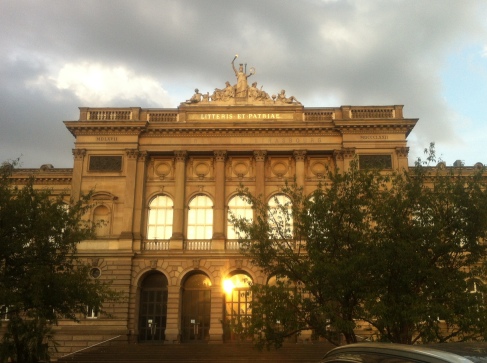…you don’t even have time to post on your blog!
Since I left Switzerland, I have had a whirlwind of an adventure readjusting to life in the US. I got engaged to Ben, found an apartment in Boston so I can comfortably live during my MA program at The Fletcher School at Tufts, and have had many follow-up meetings for my Fulbright research, which I will recap below.
1. I will be presenting my research and displaying Laura’s photos at the Museum of Tolerance in NYC on Sunday, October 21, 2012. There will be two presentations, one open to the public and one for invited guests. I am excited to work with the Museum and with Laura to plan this event, and it should be lovely! Look out for a flyer coming soon, and for the event to be listed on the MOTNY website. Hope you all can make it!
2. Laura and I were asked to create a museum-style exhibition for the 92nd St. Y in NYC and for the Washington D.C. JCC, which will take place in the spring of 2013. We’re currently meeting the 92nd St. Y and DCJCC staff to finalize the details. The events will be supported by the Swiss Consulate in NYC and the Swiss Embassy in DC. I am excited because historians don’t always work with photographers, and I feel we have the chance to do something unique and new for education on the subject. Also, the exhibitions and accompanying photos will bring my research to life!
3. I have been asked to contribute a small chapter/appendix to a colleague’s book! It will be the first time I’ll be published in a book, and a great stepping stone for future publications.
4. I was asked to write a proposal to contribute a chapter to the Child Research Development group based at Hebrew University, about the organized persecution of children. I am not sure if my chapter based on this ongoing research will be accepted, but I hope it will be!
5. Lots of meetings with potential supporters and PhD programs, to see where this will all lead in the future. All good news there, with just a few challenges and new things to think about.
6. I still have 15 more interviews with survivors to conduct, including one in Israel with the former Israeli Ambassador to Switzerland, who was a refugee child during the war. I have to plan how to get to them all while doing my work for my MA courses, but I’m sure I can do it!
7. I will be launching a new initiative to secure funding to help me travel, write, conduct interviews, speak at conferences, publish, and basically continue my research this year, before the PhD. I never imagined that my work would be so fruitful, that I’d find so much information and so many survivors to interview. I am thankful for the ongoing and new support from scholars, professors, organizations, etc. I think that when things fall into place, when you find that are good at something, and when you receive so much support and experience success, it means you are meant to do that work. This is what compels me.
If you know any organizations or individuals who would like to support my work, please contact me!
8. On a more personal note, Ben and I are engaged! We got engaged on July 4 in the Adirondacks, and we are so excited!
9. Ben and I are traveling to Portugal tonight for two weeks, for an “engagement-moon.”
10. Over the next few weeks, I have meetings in DC and NYC, writing to complete, funding to secure, moving to Boston, and the start of my MA program. I am so excited for this next step in my life, and to continue to work on my research and see what comes out of it.
I will definitely reflect on my Fulbright year in Switzerland sometime soon, from my ‘Walden Pond” (the Adirondacks). I am happy this adventure has not yet ended, and that new things constantly arise.
On a side note, best of luck to my Fulbright colleagues on their new adventures, especially Katharine at the start of her MD/PhD program at Michigan, and Claire as she finished the MA at the University of Geneva in the Montoya Lab.















